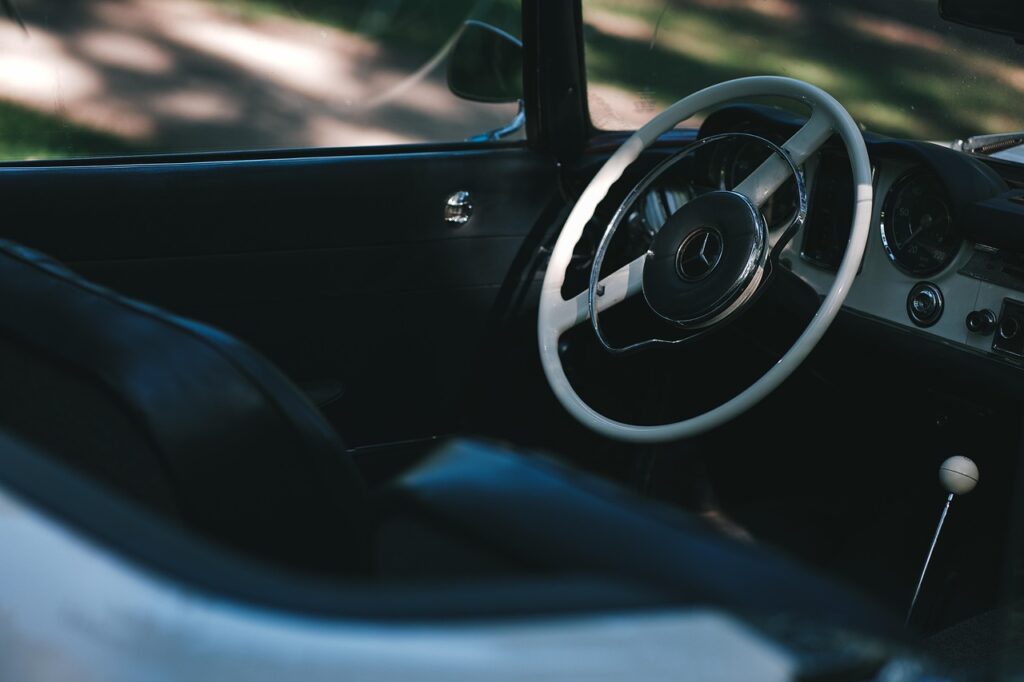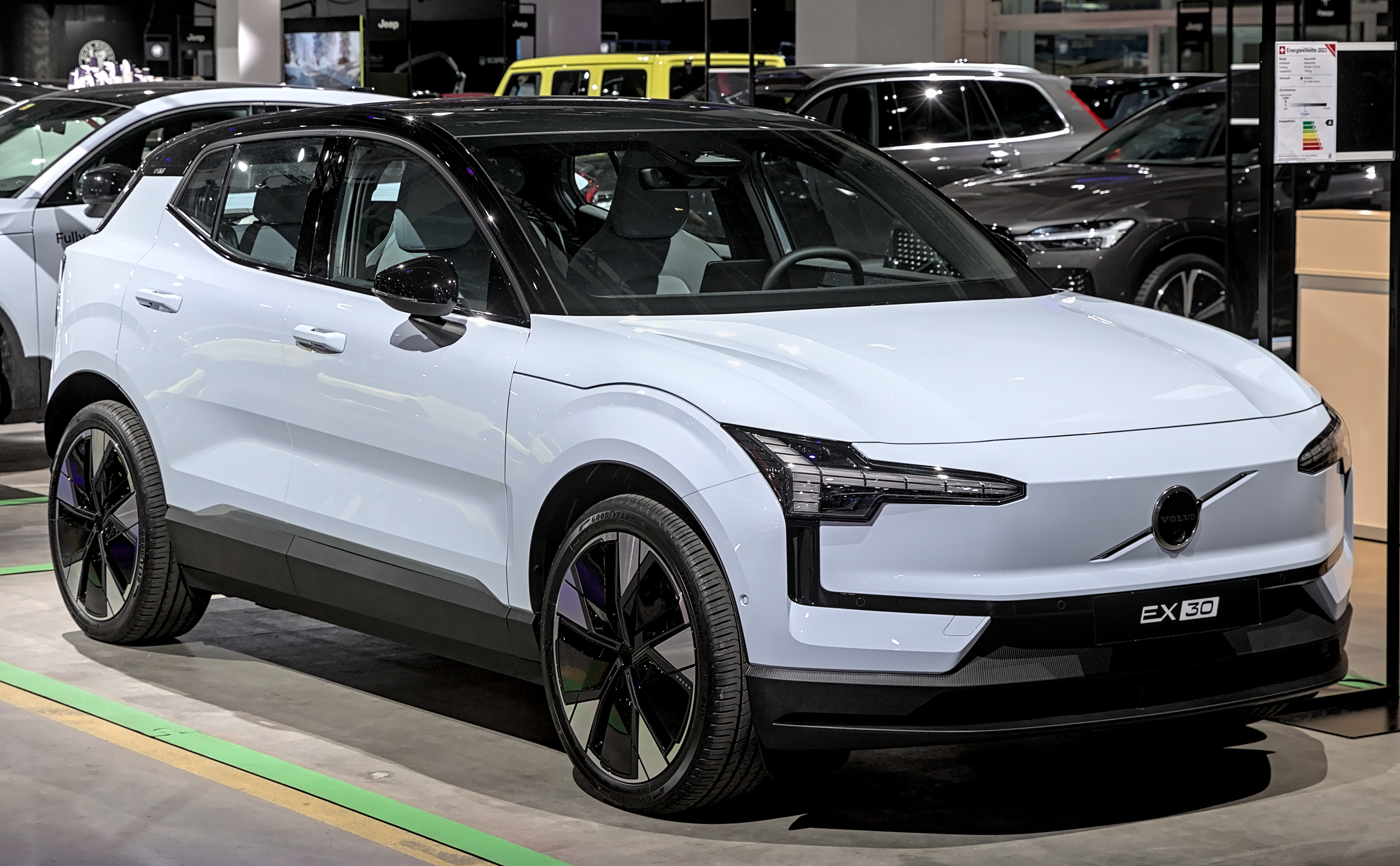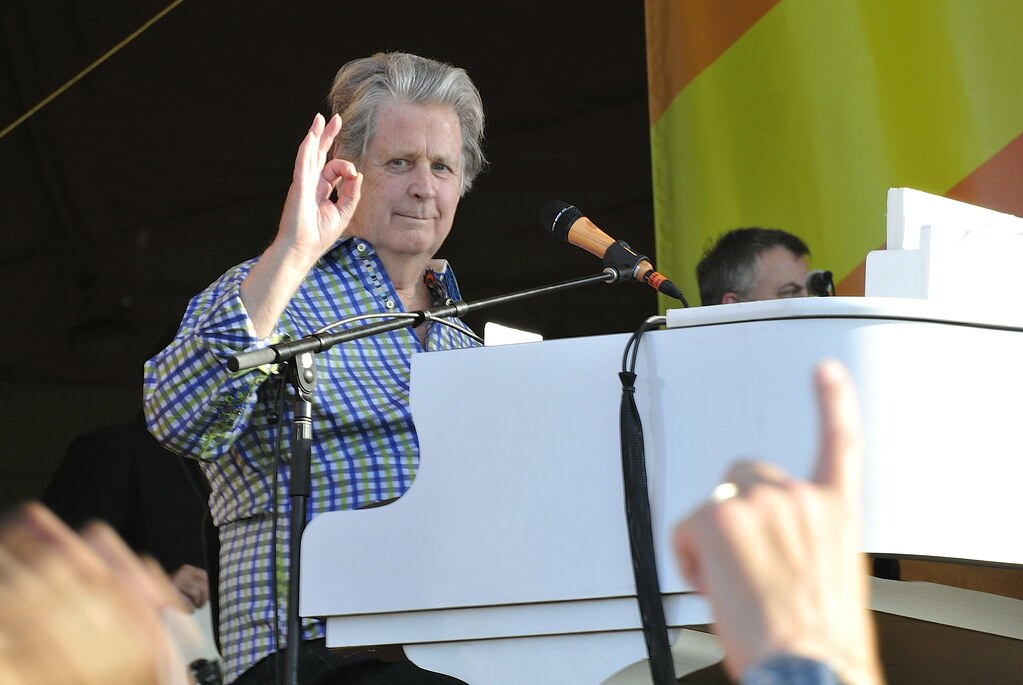
Brian Wilson, the recently deceased leader and visionary co-founder of The Beach Boys, didn’t just write songs; he crafted the very soundtrack to Southern California’s automotive golden era. His genius wasn’t limited to harmonies and melodies; it was deeply intertwined with the rumble of engines, the gleam of chrome, and the sheer exhilaration of the open road. He truly changed California car culture for the better, embedding hot rods, tailfins, and cruising into the mythos of American youth.
His passing marks the end of a prolific career, but his legacy lives on, echoing through drive-ins, vintage car shows, and coastal highways. Wilson’s music wasn’t just pop; it was an evocation, transforming local lore into national anthems. It glorified the chrome-dipped innocence of an era when fast cars, clean waves, and good times dominated the pop music landscape, influencing countless gearheads far and wide.
So, buckle up, because we’re about to take a thrilling ride through the iconic vehicles and adrenaline-pumping narratives immortalized in Brian Wilson’s music. This journey isn’t just a look at cars; it’s an exploration of how one man’s passion for speed, freedom, and the American dream became the rhythmic pulse of a generation. Get ready to rediscover the magic where music meets horsepower!
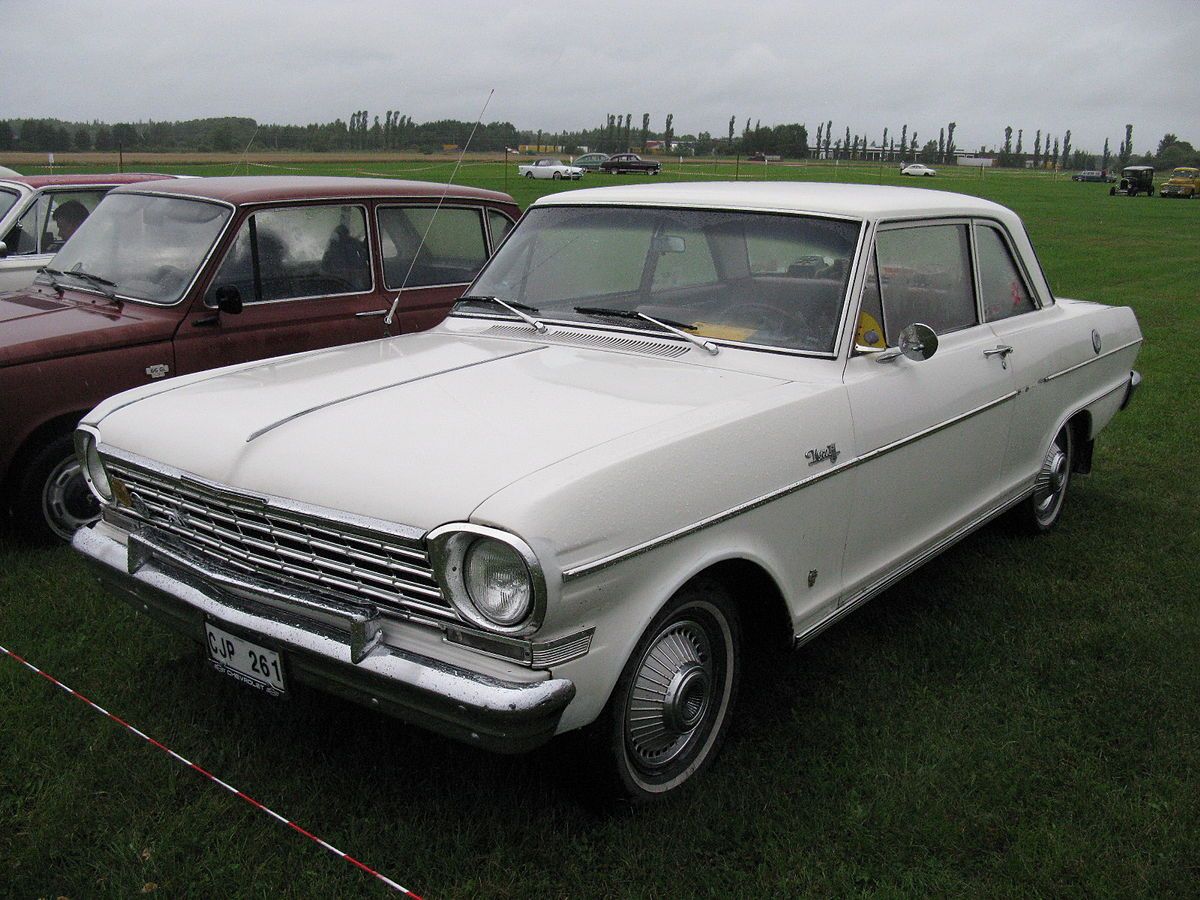
1. **The Roaring Powerhouse: Chevy 409** Few songs have arguably led to more speeding tickets than The Beach Boys’ 1962 hit, “409.” This wasn’t just a song; it was a rallying cry for the burgeoning hot rod scene, and in many ways, it’s credited with kicking off the entire 1960s hot rod music craze. The true star of the track, however, wasn’t a car itself, but a legendary piece of American engineering: the Chevy 409 cubic inch “big block” V8 engine. It was pure, unadulterated power personified in song.
This formidable V8 engine was introduced in December of 1960, quickly becoming the engine of choice for the all-new 1961 Impala Super Sport. According to Engine Facts, GM put it into production specifically to reclaim performance ground lost to Ford’s highly successful 390 engine, which had been gaining respect at local race tracks. The 409 was available in models like the Impala SS, Bel Air, and Biscayne, turning everyday cars into street-legal rockets.
For this iconic track, Brian Wilson collaborated with Gary Usher, a music producer and fellow car enthusiast. Usher played a crucial role, not just in the creative process, but by literally lending his own Chevy V8’s roar to the song’s opening bars, setting an unmistakable tone. Though Usher’s own car was a 326 cubic inch model, his contribution cemented the song’s authenticity and its status as a definitive anthem for American muscle and speed.
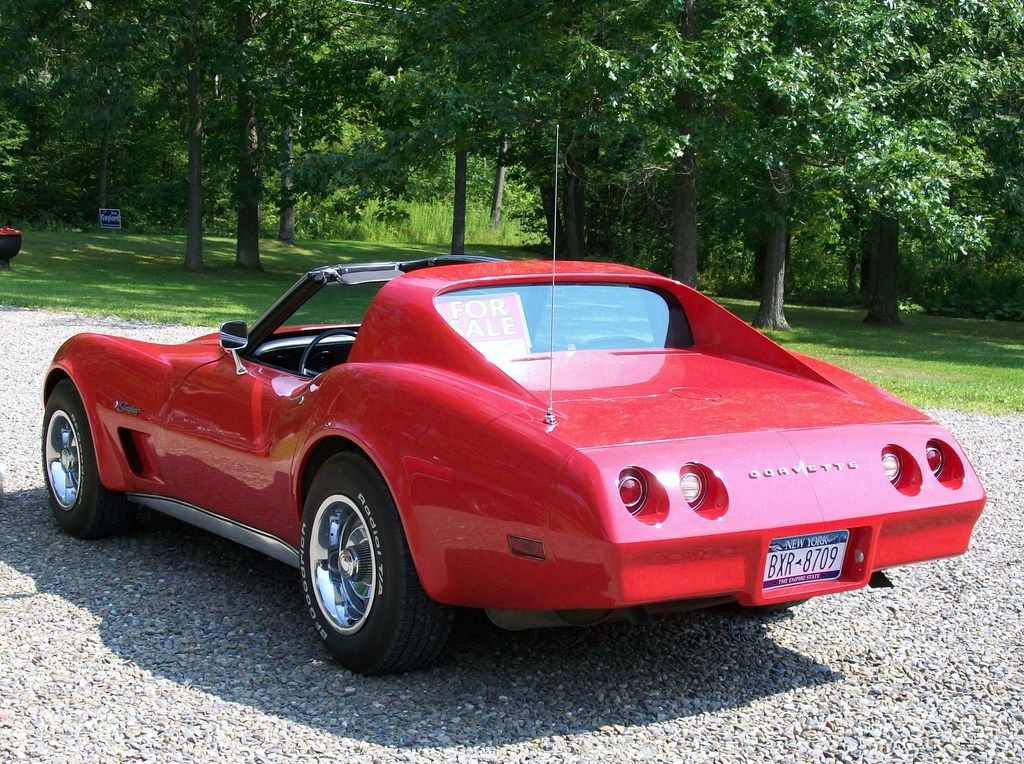
2. **The Ultimate Drag Race: “Shut Down” and the Corvette Stingray** The Beach Boys kept the pedal to the metal with the release of “Shut Down,” a high-octane B-side to “Surfin’ U.S.A.” on their 1963 record. This track is more than just a catchy tune; it’s an automotive opera, an almost instructional manual detailing a gripping drag race. The stars of this asphalt drama? A sleek Corvette Stingray, a quintessential Chevrolet model, pitted against a formidable Dodge Dart 413 Super Stock.
Penned by Roger Christian, the song vividly paints a picture of a full-throttle showdown. It’s packed with insights for any aspiring drag racer, with Wilson & Co. recommending essentials like a set of slick racing tires and the nuanced technique of “riding the clutch” to gain crucial traction off the line. The lyrics immerse the listener right into the heart of the competition, making you feel the tension and the raw power of the engines.
The outcome of this legendary duel between the Stingray and the Dart is tantalizingly ambiguous, a clever twist that keeps listeners guessing. While the Dodge appears to hold the lead for much of the race, the song’s climactic final line — “Shut it off, shut it off / Buddy, now I shut you down” — strongly implies a triumphant victory for the Corvette. It’s a masterful piece of storytelling that captures the very essence of competitive street racing.
Car Model Information: 2022 Honda Accord Sport 1.5T
Categories: All article disambiguation pages, All disambiguation pages, Disambiguation pages, Short description is different from Wikidata
Summary: Chevrolet Corvette Stingray was the name for several model years of Chevrolet Corvettes:
Corvette Stingray (concept car), concept cars from 1959 and 2009
Chevrolet Corvette (C2), the second generation of the Corvette, introduced in 1963, referred to as the Corvette Sting Ray
Chevrolet Corvette (C3), the third generation of the Corvette, introduced in 1968, referred to as the Corvette Stingray from 1969 through 1976 — in 1968, the Corvette did not have the Stingray badging
Chevrolet Corvette (C7), the seventh generation of the Corvette, introduced in 2014, referred to as the Corvette Stingray
Chevrolet Corvette (C8), the eighth generation of the Corvette, introduced in 2020, referred to as the Corvette Stingray
These generations did not use the name stingray:
Chevrolet Corvette (C1), the first generation of the Corvette, introduced in 1953
Chevrolet Corvette (C4), the fourth generation of the Corvette, introduced in 1984
Chevrolet Corvette (C5), the fifth generation of the Corvette, introduced in 1997
Chevrolet Corvette (C6), the sixth generation of the Corvette, introduced in 2005
Get more information about: Chevrolet Corvette Stingray
Buying a high-performing used car >>>
Brand: Chevrolet Model: Corvette Stingray
Price: $25,730 Mileage: 14,743 mi.
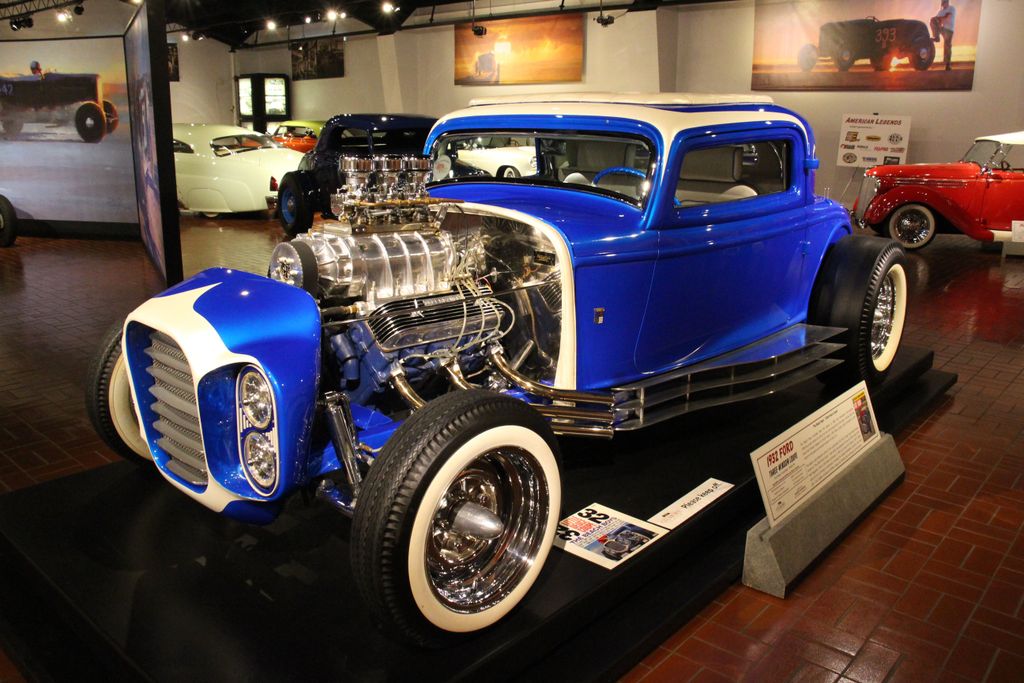
3. **The Legend of the Hot Rod: “Little Deuce Coupe” and the 1932 Ford** We simply couldn’t talk about Brian Wilson’s automotive anthems without spotlighting one of his most notable car-related tunes: 1963’s “Little Deuce Coupe.” This smash hit, a brilliant collaboration between Wilson and the aforementioned radio DJ Roger Christian, stands as an enduring ode to Southern California’s vibrant drag racing scene and the iconic vehicles that defined it. Christian’s lyrics immortalized a particularly legendary model: the 1932 Ford Coupe.
The “deuce,” as it was affectionately known – a direct reference to the last digit in the car’s model year – was an immensely popular choice among the drag racing faithful. Its widespread appeal wasn’t just about its classic lines; it was largely due to its potent flathead V8 engine, which offered impressive performance for its time. The car earned a reputation for its raw power, famously proclaimed in the song for its ability to “walk a Thunderbird like she’s standing still.”
While the song’s proclaimed top speed of 140 mph might have been a touch ambitious for a stock ’32 Ford, it certainly wasn’t out of the question with a few key modifications. “Little Deuce Coupe” was a massive success for The Beach Boys, soaring as high as #15 on the Billboard Hot 100. What’s even more impressive is that it achieved this as the B-side to the equally popular beach beauty bop, “Surfer Girl,” firmly cementing its place in popular culture as a symbol of cool, speed, and rebellious youth.
Car Model Information: 2023 Ford Mustang EcoBoost
Caption: 1932 Ford Model B Standard Tudor 2-door sedan
Name: 1932 Ford Model B
Manufacturer: Ford Motor Company
Production: 1932–1934
Predecessor: Ford Model A (1927–1931)
Successor: Ford Model 48
Class: Full-size Ford
BodyStyle: phaeton body,Pickup truck
Engine: 201 cuin
Abbr: on
Transmission: Non-synchronous transmission,Manual transmission
Wheelbase: 2692 mm
Disp: flip
Layout: FR layout
Assembly: see list below
Related: Ford Model Y,Ford Köln,Ford Rheinland,GAZ-M1
Designer: Edsel Ford
Categories: 1930s cars, All articles needing additional references, All articles with unsourced statements, Articles needing additional references from January 2021, Articles with short description
Summary: The term 1932 Ford may refer to three models of automobile produced by Ford Motors between 1932 and 1934: the Model B, the Model 18, and the Model 40. These succeeded the Model A. The Model B had an updated four-cylinder engine and was available from 1932 to 1934. The Model 18 was the first Ford fitted with the flathead V-8, and it was available in the Model 40 too in 1933 and 1934. The company also replaced the Model AA truck with the Model BB, available with either the four- or eight-cylinder engine.
The three car models were replaced by the streamlined Model 48 in 1935.
Get more information about: 1932 Ford
Buying a high-performing used car >>>
Brand: Ford Model: Coupe
Price: $27,365 Mileage: 23,158 mi.
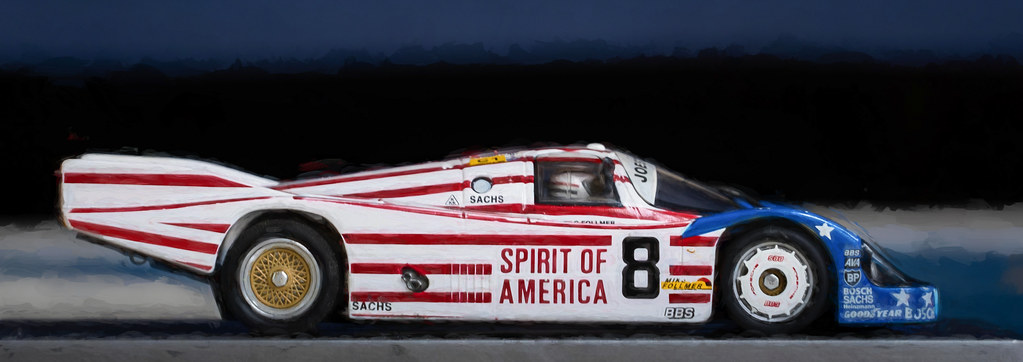
4. **Beyond the Boulevard: “Spirit of America” and the Land Speed Record Breaker** Brian Wilson and Roger Christian continued their string of high-octane collaborations with 1963’s “Spirit Of America,” but this time, they shifted gears dramatically. While much of their prior work celebrated Southern California’s youth-oriented hot rod scene, “Spirit Of America” bravely took its focus to the vast, flat expanse of Utah’s famous Bonneville Salt Flats. This track celebrated not street racing, but pure, unadulterated speed, pushing the boundaries of human and mechanical achievement.
The “Spirit of America” in question was no ordinary car; it was a revolutionary jet-powered vehicle, meticulously built and fearlessly driven by the legendary Craig Breedlove. This engineering marvel was certainly worthy of its own ballad. In 1963, the car achieved an astonishing top speed of 407.5 mph, decisively setting a new land speed record and capturing the imagination of a nation enthralled by speed.
But Breedlove wasn’t one to rest on his laurels. He continued to break his own records throughout the decade, ultimately topping out at an mind-boggling 600.6 mph in 1965 behind the wheel of the upgraded Spirit of America – Sonic 1. Wilson’s “The Spirit of America” almost reads like a classic folk song despite his pop roots, capturing the awe and ambition associated with these incredible feats of engineering and courage, translating raw power into a compelling narrative.
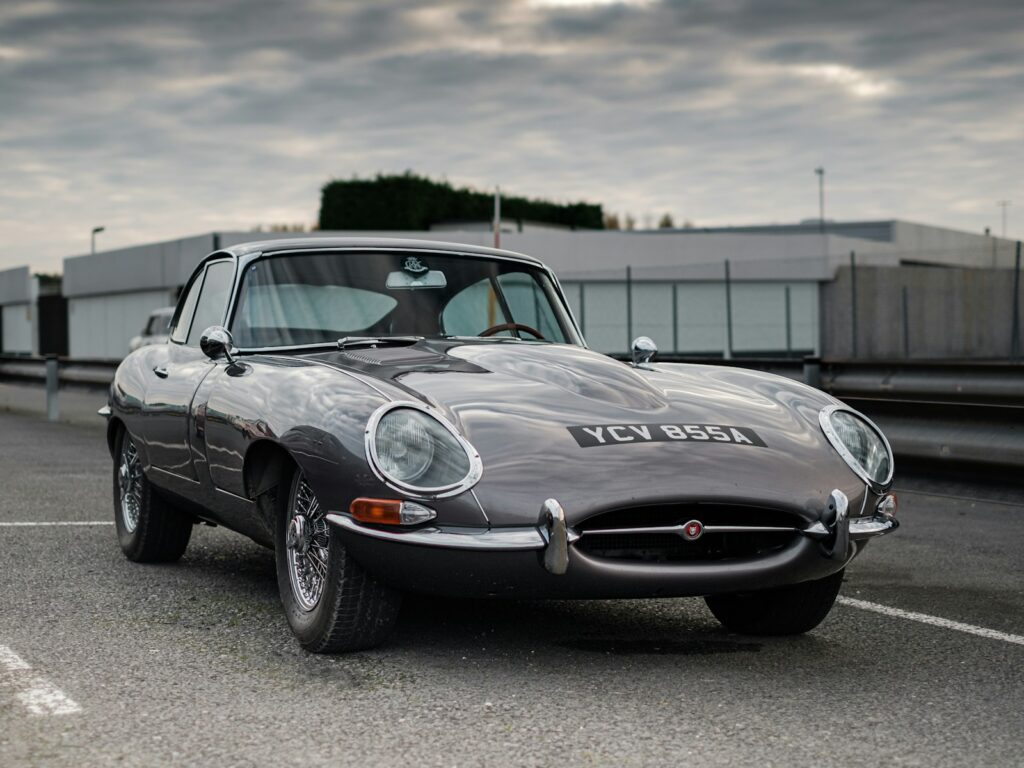
5. **Cruising with the Crew: “Our Car Club” and the Joy of Togetherness** There’s an undeniable truth universally acknowledged by car enthusiasts: a drive is always a little more fun with some buddies in tow. This truism was perfectly immortalized in 1963’s “Our Car Club,” a testament to what was an incredibly productive year for The Beach Boys. The song radiates the joyous spirit of youthful camaraderie, describing a lively gang of friends hitting the open road, united by their shared passion for automobiles and the exhilarating decision to form their own car club.
“Our Car Club” is brimming with the classic braggadocio and playful competitiveness for which many of the band’s car-specific songs are known. The lyrics paint a vivid picture of a group confident in their machines, vowing to “really put you through the grind” and boasting their ability to log “some really low ETs” (elapsed times) on the strip. It’s all about showing off your ride and challenging your pals to a friendly, high-stakes contest.
The song also gives a shout-out to a few specific models that were the envy of any club member, including the sleek Jaguar XKE, the powerful Corvette Stingray, and, of course, the eternally beloved Deuce Coupe. It captures that quintessential feeling of freedom, belonging, and healthy competition that defines car culture, especially among young enthusiasts. It’s about more than just cars; it’s about the shared experience and the memories made on the open road.
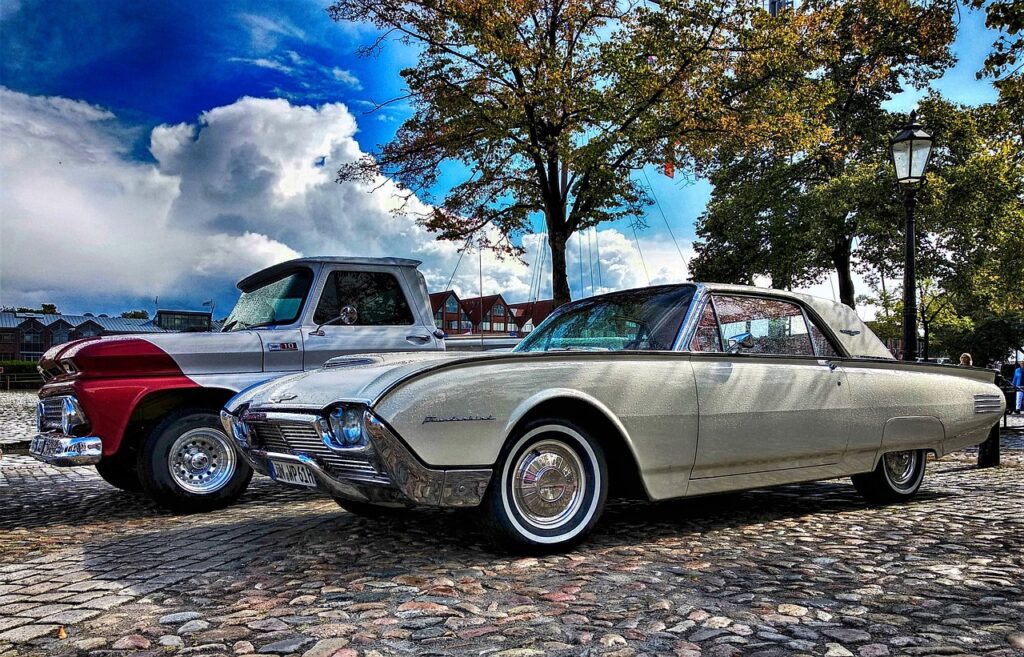
6. **The Great T-Bird Adventure: “Fun, Fun, Fun” and the 1963 Thunderbird** “Fun, Fun, Fun” is an iconic Beach Boys track that preceded the monumental “Pet Sounds” by a few years, yet it holds a special place in the band’s catalog and on the charts. This vivacious song has the distinction of reaching an impressive #5 on the Billboard charts, even in a week where The Beatles were dominating the top three spots, showcasing The Beach Boys’ formidable chart presence. Inspired by Chuck Berry’s “Nadine,” it’s a narrative masterpiece detailing a quintessential teenage joyride.
The inspiration for “Fun, Fun, Fun” actually stemmed from a true event, brought to Dennis Wilson’s attention. He heard a fantastic story about the daughter of a Salt Lake City radio station owner who, with a twinkle in her eye, took her father’s prized 1963 Thunderbird out for an unsanctioned spin. The tale unfolds with the teen claiming she was headed to the library, but instead, she cruised down to the local hamburger stand, thoroughly got her kicks, and then had to deal with the inevitable aftermath.
The song perfectly captures the essence of youthful rebellion and the thrill of temporary freedom. It vividly portrays the carefree spirit of a teenager behind the wheel, making her own rules, at least for a little while. The consequence, as immortalized in the lyrics, was swift and definitive: “Daddy took the T-Bird away.” It’s a poignant yet playful narrative that immortalizes a moment of classic American teenage life, all centered around that beautiful 1963 Thunderbird.
Car Model Information: 2003 Ford Thunderbird Premium
Name: Ford Thunderbird
Caption: 1957 Thunderbird
Manufacturer: Ford Motor Company
Production: unbulleted list
ModelYears: unbulleted list
Class: unbulleted list
Layout: Front-engine, rear-wheel drive layout
Categories: 1960s cars, 1970s cars, 1980s cars, 1990s cars, 2000s cars
Summary: The Ford Thunderbird is a personal luxury car manufactured and marketed by Ford Motor Company for model years 1955 to 2005, with a hiatus from 1998 to 2001.
Ultimately gaining a broadly used colloquial nickname, the T-Bird, the model was introduced as a two-seat convertible, subsequently offered variously in a host of body styles including as a four-seat hardtop coupe, four-seat convertible, five-seat convertible and hardtop, four-door pillared hardtop sedan, six-passenger hardtop coupe, and five-passenger pillared coupe, before returning in its final generation, again as a two-seat convertible.
At its inception, Ford targeted the two-seat Thunderbird as an upscale model. The 1958 model year design introduced a rear seat and arguably marked the expansion of a market segment that came to be known as personal luxury cars, positioned to emphasize comfort and convenience over handling and high-speed performance.
Get more information about: Ford Thunderbird
Buying a high-performing used car >>>
Brand: Ford Model: Thunderbird
Price: $14,700 Mileage: 49,430 mi.
7. **Finding Solace Behind the Wheel: “In My Car” and the Fiberglass Dream** While the title “In My Car” might, at first glance, evoke comparisons to the famously introspective “In My Room” from 1963, these two songs couldn’t be more different in their subject matter. The latter saw Brian Wilson, known for his agoraphobia, waxing poetic about the simple, comforting pleasure of domestic isolation. However, “In My Car” provides a fascinating contrast, revealing Wilson finding a remarkably similar sort of satisfaction, peace, and freedom, but this time, from behind the wheel of a classic Corvette.
The lyrics paint a vivid, almost dreamlike picture of this automotive escape: “The highway is my home / In fiberglass and chrome / Fantasy car shiny Corvette.” It’s a testament to the idea that for some, the car isn’t just transport; it’s a sanctuary, a mobile personal space where one can truly be free. The Corvette, with its iconic design and powerful presence, becomes more than just a vehicle; it’s a symbol of liberation and an extension of one’s identity on the open road.
Despite its evocative lyrics and unique place in the band’s catalog, “In My Car” was never one of The Beach Boys’ more popular numbers. It also boasts a rather odd and poignant history, with the story circulating that the tune was actually forced onto their 1989 album, “Still Cruisin’,” by Wilson’s controversial and less-than-reputable psychiatrist, Eugene Landy. Nonetheless, the song holds two significant distinctions: it marked The Beach Boys’ last album on Capitol Records and, perhaps more tellingly, it was the very last car-inspired song in the band’s extensive catalog, a final, shimmering tribute to the automotive world that had so profoundly shaped their music. It truly highlights how deeply intertwined Brian Wilson’s creative spirit was with the hum of an engine and the freedom of the road.
Now, as we shift gears from the asphalt anthems that soundtracked a generation, we plunge headfirst into another fascinating facet of Brian Wilson’s automotive obsession: his very own garage. Beyond the lyrics that glorified chrome and speed, Wilson was an “avowed classic car enthusiast,” a man whose personal collection echoed the very era he so masterfully romanticized in song. These weren’t merely props for a music video; they were tangible embodiments of the fast, carefree lifestyle he celebrated, each car a statement of identity, tied to the sun-bleached optimism he immortalized.
From his earliest days to his later years, Wilson’s passion for magnificent machinery was undeniably real, extending far beyond the recording studio. His cars were more than just metal and rubber; they were reflections of a man who understood the profound connection between a beautiful automobile and the American spirit. We’re talking timeless classics that captured the essence of an era, alongside modern marvels that spoke to an enduring appreciation for engineering excellence and exhilarating performance. And then, there’s a truly special Cadillac, a car with a story so captivating it belongs in its own ballad. So, get ready to pop the hood and explore the extraordinary machines that filled the garage of a musical legend.
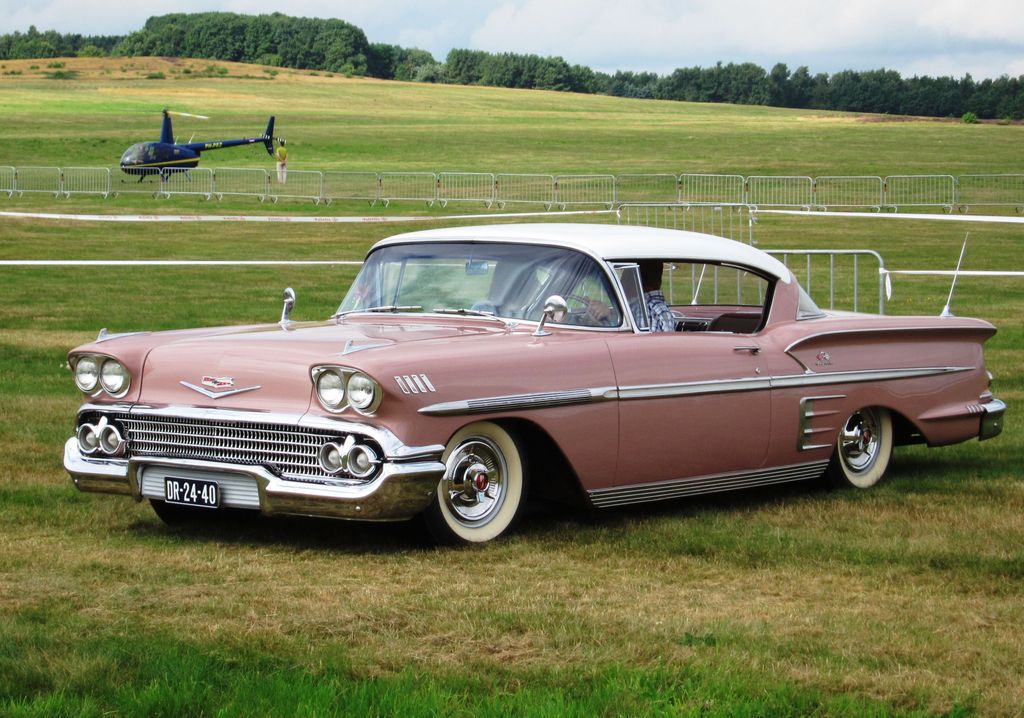
8. **The Genesis of a Collection: The 1958 Chevy Impala**Every great journey starts somewhere, and for Brian Wilson’s personal automotive odyssey, it began with a magnificent 1958 Chevy Impala. This wasn’t just a car; it was a foundational piece, the very first stepping stone into a world of four-wheeled wonders that would define so much of his creative output and personal joy. Imagine a young Brian, fresh with the possibilities of Southern California, cruising in this iconic machine, the sounds of its engine undoubtedly sparking the initial melodies that would soon become synonymous with car culture itself.
The 1958 Impala, with its distinctive styling and burgeoning V8 power options, was a symbol of post-war American prosperity and burgeoning automotive freedom. For Wilson, it likely represented that crucial blend of personal independence and youthful ambition, perfectly aligning with the spirit he would later infuse into The Beach Boys’ early hits. It’s easy to picture him behind the wheel, windows down, the California sun glinting off its chrome, absorbing the very essence of the driving experience that would later inspire anthems like “409” and “Fun, Fun, Fun.” This car was more than just transport; it was the starting gun for a lifelong love affair.
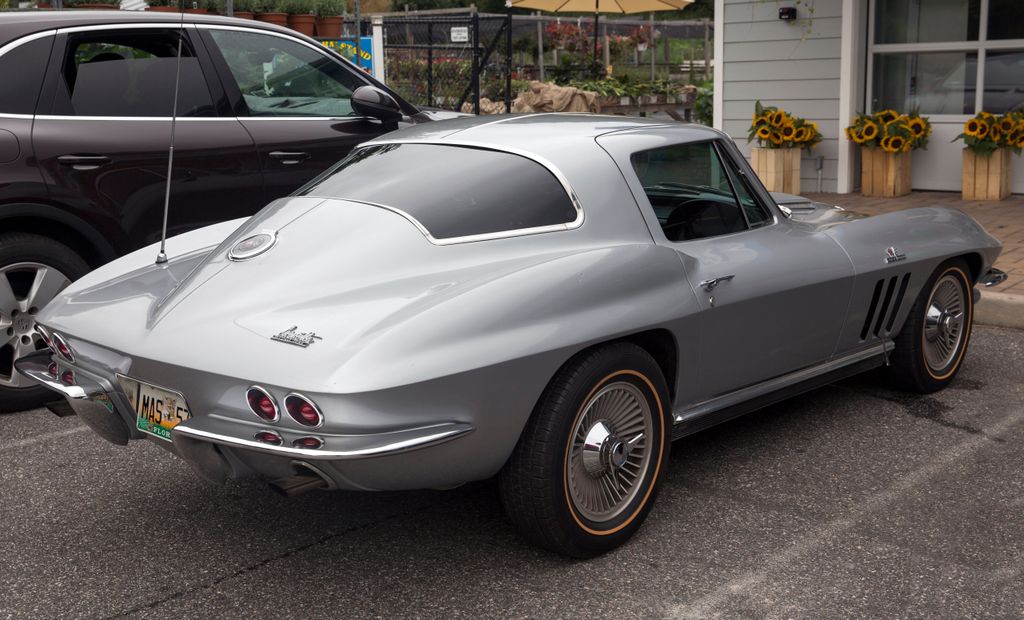
9. **The Classic Stingray: 1966 Chevrolet Corvette Sting Ray**As Brian Wilson’s passion for cars deepened, it was almost inevitable that a Corvette would find its way into his prized collection. Indeed, “From a Corvette to a Stingray, the musicians loved a Chevrolet vehicle,” and Wilson himself owned a “sweeping 1966 Chevrolet Corvette Sting Ray.” This wasn’t just any Corvette; the C2 generation, known for its iconic “Sting Ray” moniker, is arguably one of the most visually arresting and performance-oriented American sports cars ever produced, a true automotive masterpiece.
The 1966 Sting Ray perfectly embodied the sleek, powerful aesthetic of the era that Wilson’s music so vividly captured. With its distinctive split-window design (in earlier C2 models) and potent V8 engines, it was the epitome of cool, a car built for thrilling drives along the Pacific Coast Highway. For a man who translated the “roar of engines” and the “sense of freedom in open-top Cruisers” into chart-topping hits, owning such a magnificent piece of American engineering was not just a luxury, but a profound connection to the very soul of his inspiration. It stands as a testament to his deep appreciation for high-performance art on wheels.
Car Model Information: 2022 Honda Accord Sport 1.5T
Name: Chevrolet Corvette (C2)
Caption: 1963 Chevrolet Corvette Sport Coupe
Manufacturer: Chevrolet
Aka: Chevrolet Corvette Sting Ray
Production: August 1962–July 1967
ModelYears: 1963–1967
Platform: Series 0800 (1962-1964),Series 194 (1965-1967)
Chassis: Body-on-frame
Assembly: St. Louis, Missouri
Predecessor: Chevrolet Corvette (C1)
Successor: Chevrolet Corvette (C3)
Class: Sports car
BodyStyle: Convertible (car),coupé
Layout: Front-engine, rear-wheel-drive layout
Engine: {{cvt,327,cuin,L,1,Chevrolet small-block engine#327,V8 engine
Wheelbase: cvt
Length: cvt
Width: cvt
Height: cvt
Weight: cvt
Transmission: manual transmission,manual transmission,Powerglide
Related: Bill Thomas Cheetah
Designer: Larry Shinoda
Categories: 1960s cars, All articles needing additional references, All articles with specifically marked weasel-worded phrases, All articles with unsourced statements, Articles needing additional references from July 2024
Summary: The Chevrolet Corvette (C2) is the second-generation Corvette sports car, produced by the Chevrolet division of General Motors (GM) for the 1963 through 1967 model years.
Get more information about: Chevrolet Corvette (C2)
Buying a high-performing used car >>>
Brand: Chevrolet Model: Corvette Sting Ray
Price: $25,730 Mileage: 14,743 mi.
Read more about: Unleash the Thrill: Top Sports Cars Under $100,000 for Performance-Minded Buyers

10. **Muscle Car Glory: 1966 Ford Mustang**No American car enthusiast’s collection from the 1960s would be complete without a true muscle icon, and Brian Wilson was no exception. He possessed “the muscle of a 1966 Ford Mustang,” a car that, almost single-handedly, defined a new segment of the automotive market and became an instant legend. The Mustang was more than just a car; it was a cultural phenomenon, synonymous with youth, freedom, and accessible performance—values deeply ingrained in The Beach Boys’ musical ethos.
The 1966 Mustang, with its unmistakable lines and a range of powerful V8 engine options, offered an intoxicating blend of style and speed. It was the perfect vehicle for cruising boulevards or heading to the drive-in, encapsulating the vibrant, rebellious spirit of the decade. For Wilson, who so eloquently glorified “hot rods” and “tailfins” in his music, the Mustang was a natural fit, a tangible representation of the car-centric dreams he spun into gold records. It’s easy to imagine him appreciating its raw power and undeniable charm, a car that truly embodied the “American dreams” he immortalized.
Car Model Information: 1966 Ford Mustang Base
Name: Ford Mustang
Caption: 2018 Ford Mustang GT 5.0
Aka: Ford T5 (Germany)
Manufacturer: Ford Motor Company
Production: March 1964 – present
ModelYears: 1965–present
Class: Unbulleted list
BodyStyle: Unbulleted list
Layout: Front-engine, rear-wheel-drive layout
Categories: 1970s cars, 1980s cars, 1990s cars, 2+2 coupés, 2000s cars
Summary: The Ford Mustang is a series of American automobiles manufactured by Ford. In continuous production since 1964, the Mustang is currently the longest-produced Ford car nameplate. Currently in its seventh generation, it is the fifth-best selling Ford car nameplate. The namesake of the “pony car” automobile segment, the Mustang was developed as a highly styled line of sporty coupes and convertibles derived from existing model lines, initially distinguished by “long hood, short deck” proportions.
Originally predicted to sell 100,000 vehicles yearly, the 1965 Mustang became the most successful vehicle launch since the 1927 Model A. Introduced on April 17, 1964 (16 days after the Plymouth Barracuda), over 400,000 units were sold in its first year; the one-millionth Mustang was sold within two years of its launch. In August 2018, Ford produced the 10-millionth Mustang; matching the first 1965 Mustang, the vehicle was a 2019 Wimbledon White convertible with a V8 engine.
The success of the Mustang launch led to multiple competitors from other American manufacturers, including the Chevrolet Camaro and Pontiac Firebird (1967), AMC Javelin (1968), and Dodge Challenger (1970). It also competed with the Plymouth Barracuda, which was launched around the same time. The Mustang also had an effect on designs of coupes worldwide, leading to the marketing of the Toyota Celica and Ford Capri in the United States (the latter, by Lincoln-Mercury). The Mercury Cougar was launched in 1967 as a unique-bodied higher-trim alternative to the Mustang; during the 1970s, it included more features and was marketed as a personal luxury car.
From 1965 until 2004, the Mustang shared chassis commonality with other Ford model lines, staying rear-wheel-drive throughout its production. From 1965 to 1973, the Mustang was derived from the 1960 Ford Falcon compact. From 1974 until 1978, the Mustang (denoted Mustang II) was a longer-wheelbase version of the Ford Pinto. From 1979 until 2004, the Mustang shared its Fox platform chassis with 14 other Ford vehicles (becoming the final one to use the Fox architecture). Since 2005, Ford has produced two generations of the Mustang, each using a distinct platform unique to the model line.
Through its production, multiple nameplates have been associated with the Ford Mustang series, including GT, Mach 1, Boss 302/429, Cobra (separate from Shelby Cobra), and Bullitt, along with “5.0” fender badging (denoting 4.9 L OHV or 5.0 L DOHC V8 engines).
Get more information about: Ford Mustang
Buying a high-performing used car >>>
Brand: Ford Model: Mustang
Price: $32,991 Mileage: 98,811 mi.
Read more about: Everyone Wants These 14 Classic Cars In Their Garage: A Deep Dive for Enthusiasts
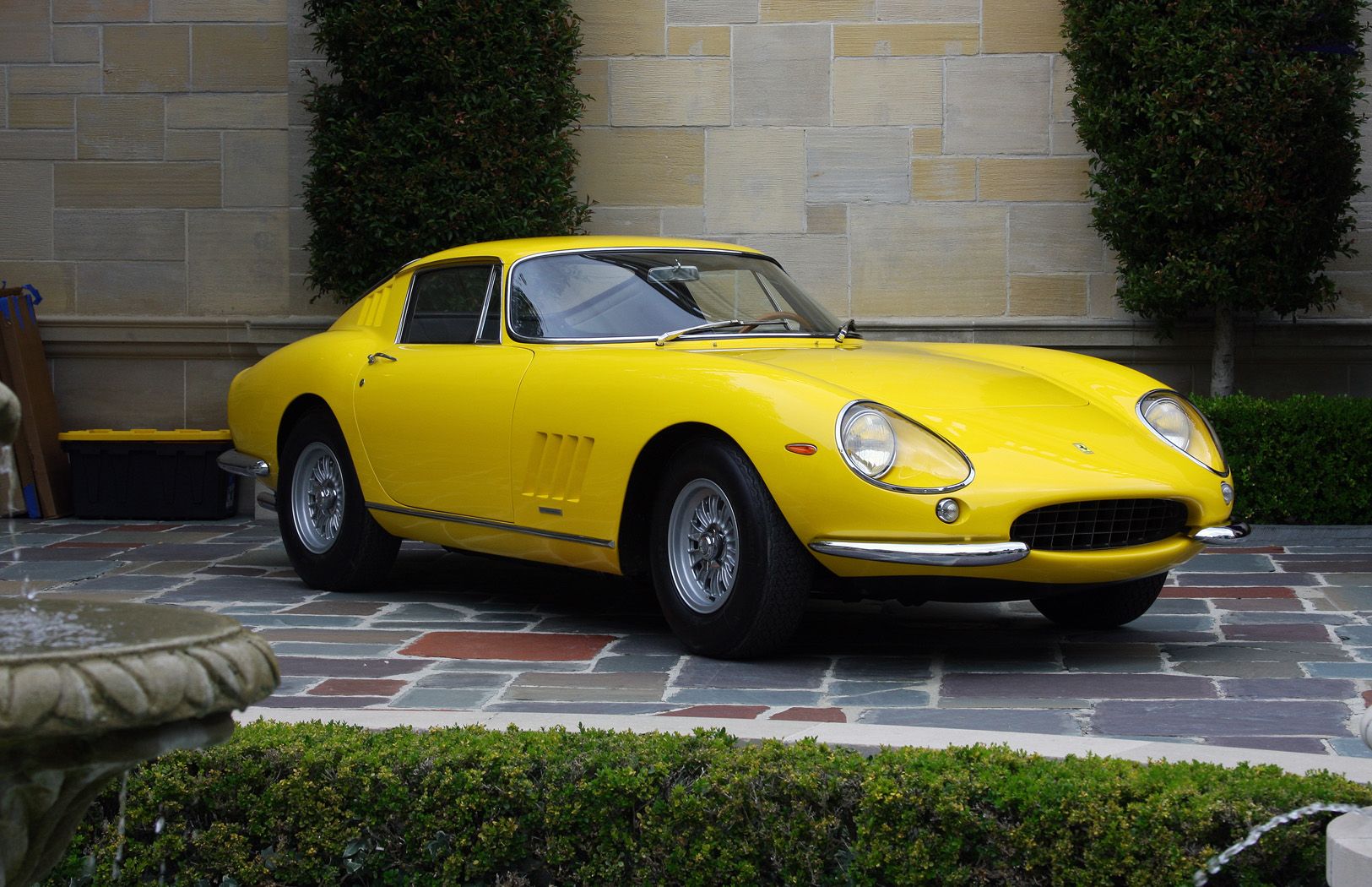
11. **European Elegance: Ferrari 275 GTB**While Brian Wilson’s musical output was quintessentially American, his personal taste in automobiles was delightfully eclectic, extending far beyond the domestic giants. The presence of “the refinement of a Ferrari 275 GTB” in his collection truly underscores his connoisseurship. This Italian masterpiece, renowned for its exquisite design, sublime engineering, and exhilarating performance, introduced a touch of European sophistication to his garage, showcasing a broader appreciation for automotive artistry.
The Ferrari 275 GTB, produced between 1964 and 1968, was a grand touring icon, a vehicle that blended racing pedigree with luxurious comfort. Its V12 engine and Pininfarina-designed body were the stuff of dreams for any car enthusiast, offering an entirely different kind of driving experience compared to the raw power of American muscle. For Wilson, owning such a car undoubtedly represented the pinnacle of automotive desire, a testament to his understanding that beauty and performance transcended geographical boundaries, much like his own music resonated globally.
Car Model Information: 2022 Honda Accord Sport 1.5T
Name: Ferrari 275,GTB, GTS, GTB/4, NART Spider
Caption: 1966 Ferrari 275 GTB Series II
Manufacturer: Ferrari
Class: Grand tourer
BodyStyle: unbulleted list
Production: unbulleted list
Wheelbase: 2400 mm
Abbr: on (alloy-bodied 275 GTB/C)
Weight: unbulleted list
Predecessor: Ferrari 250
Successor: unbulleted list
Layout: Front-engine, rear-wheel-drive layout
Engine: unbulleted list
Transmission: transaxle
Designer: unbulleted list
Categories: All articles with dead external links, All articles with unsourced statements, Articles with dead external links from April 2024, Articles with permanently dead external links, Articles with short description
Summary: The Ferrari 275 is a series of front-engined V12-powered grand touring automobiles with two-seater coupé and spider bodies produced by Ferrari between 1964 and 1968. The first 275 series cars were powered by a 3.3 L (3286 cc) overhead camshaft Colombo 60° V12 engine producing 260–320 hp (190–240 kW). An updated 275 GTB/4 was introduced in 1966, with a revised four overhead camshaft engine producing 300 hp (220 kW). The 275 series were the first road-going Ferraris equipped with a transaxle and independent rear suspension.
Pininfarina designed the 275 coupé and spider bodies, while Scaglietti designed the 275 GTS/4 NART Spyder, of which only 10 were made.
Motor Trend Classic named the 275 GTB coupé/GTS spider as number three in their list of the ten “Greatest Ferraris of all time”, and the 275 GTB/4 was named number seven on Sports Car International’s 2004 list of Top Sports Cars of the 1960s. In a September 1967 road test, Road & Track described the NART Spyder as “the most satisfying sports car in the world.”
Get more information about: Ferrari 275
Buying a high-performing used car >>>
Brand: Ferrari Model: 275 GTB
Price: $25,730 Mileage: 14,743 mi.
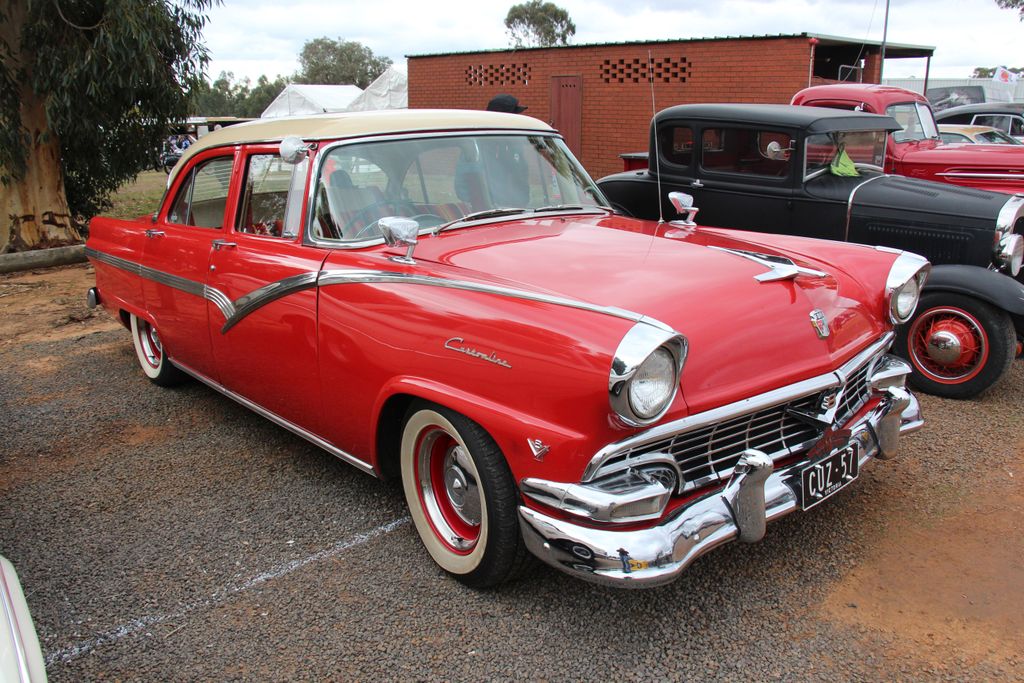
12. **Mid-Century Chrome: 1957 Ford Fairlane**Among his diverse fleet, Brian Wilson also owned a “chrome-detailed 1957 Ford Fairlane,” a magnificent vehicle that perfectly encapsulated the mid-century American aesthetic he so frequently referenced in his early music. The Fairlane, especially the iconic Skyliner with its retractable hardtop, was a beacon of design and innovation in its era, adorned with the very chrome artistry that defined Southern California’s automotive scene. This car was a direct link to the “chrome-dipped innocence” he glorified.
The 1957 Fairlane, with its sweeping lines, generous use of chrome, and powerful V8 options, was a staple of American roads during the golden age of motoring. It symbolized an era of optimism and flair, perfectly fitting for a man whose songs captured the “good times” and vibrant spirit of the 1950s and early 60s. For Wilson, this car was more than a collector’s item; it was a rolling piece of Americana, a tangible connection to the very cultural landscape he helped to define and celebrate.
Car Model Information: 1956 Ford Fairlane Sedan
Name: Ford Fairlane
Caption: 1967 Ford Fairlane
Manufacturer: Ford Motor Company
Layout: FR layout
Production: 1955–1970
Assembly: ubl
Class: Full-size
BodyStyle: hardtop
Predecessor: Ford Crestline
Successor: Ford Galaxie
Categories: 1960s cars, 1970s cars, All articles with specifically marked weasel-worded phrases, All articles with unsourced statements, Articles with short description
Summary: The Ford Fairlane is an automobile model that was sold between the 1955 and 1970 model years by Ford in North America. Taking its name from the Dearborn, Michigan estate of Henry Ford, the Fairlane nameplate was used for seven different generations of vehicles. Through its production, the model line would be marketed in a variety of body styles, including two-door and four-door sedans, two-door and four-door hardtops, station wagons, and both traditional and retractable-hardtop convertibles.
Initially introduced as the flagship of the full-size Ford range, the Fairlane marked the introduction of the Crown Victoria and 500 nameplates, both later becoming standalone full size model lines (the latter, as the Ford Five Hundred).
Following the introduction of the Ford Galaxie, the Fairlane 500 (and Fairlane) became Ford’s base models, equivalent to the Chevrolet Bel Air and Biscayne respectively, until 1962, when it was repackaged as an intermediate-segment car (today, mid-size) from 1962 to 1970. For 1971, Ford expanded the Ford Torino nameplate across its entire intermediate range, dropping the Fairlane (and Falcon) nameplates in North America. In South America, the sixth generation Fairlane was marketed through 1981; Ford Australia used the nameplate on its own version of the Fairlane (a long-wheelbase Ford Falcon) through the 2007 model year.
Get more information about: Ford Fairlane (Americas)
Buying a high-performing used car >>>
Brand: Ford Model: Fairlane
Price: $19,991 Mileage: 88,500 mi.
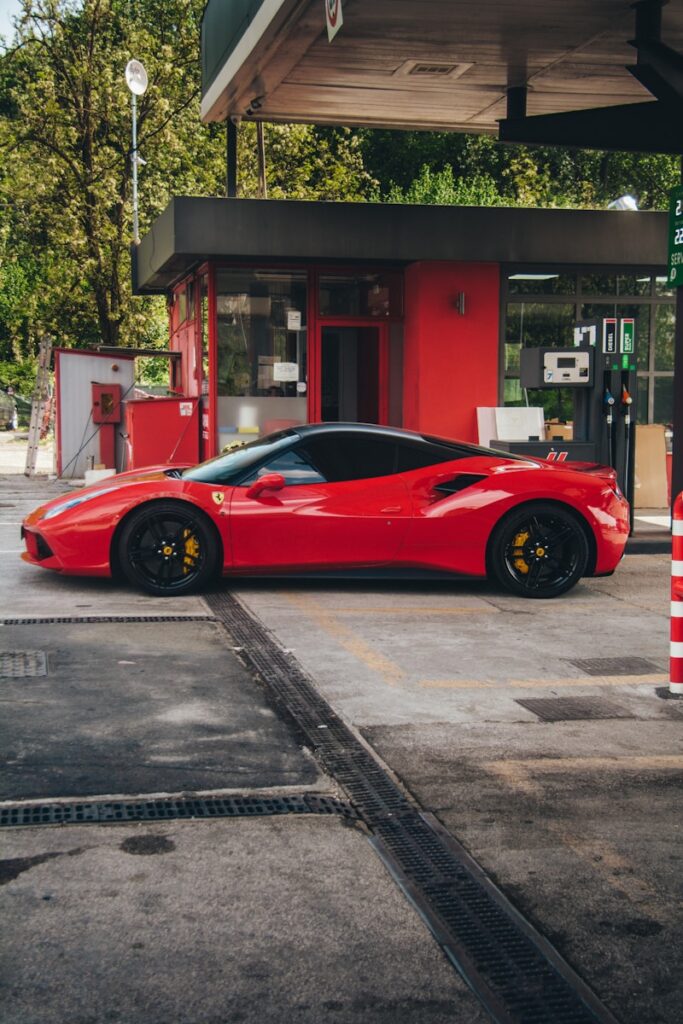
13. **Modern Powerhouses: The Ferrari 488 GTB and McLaren 720S**Brian Wilson’s appreciation for automotive excellence wasn’t solely rooted in nostalgia; his collection also ventured boldly into the realm of “modern supercars.” Among his later acquisitions were the formidable Ferrari 488 GTB and the breathtaking McLaren 720S, demonstrating a keen eye for contemporary performance and cutting-edge design. These vehicles represent the evolution of speed and engineering, proving that Wilson’s love for “all things fast and furious” continued well beyond the heyday of hot rods.
The Ferrari 488 GTB, with its twin-turbocharged V8, delivers exhilarating performance and razor-sharp handling, a true testament to Maranello’s enduring legacy of speed. Similarly, the McLaren 720S stands as a paragon of modern hypercar engineering, boasting astonishing acceleration, advanced aerodynamics, and a chassis designed for track-day prowess. These machines, far removed from the simpler mechanics of a ’32 Ford, highlight Wilson’s deep and abiding respect for automotive innovation, showcasing his taste for both timeless elegance and blistering, state-of-the-art power.
Car Model Information: 2022 Honda Accord Sport 1.5T
Name: Ferrari 488
Manufacturer: Ferrari
Production: 2015–2020
Assembly: Maranello
Designer: Flavio Manzoni
Class: Sports car
BodyStyle: berlinetta
Layout: Rear-engine, rear-wheel-drive layout
Engine: Ferrari F154 engine,twin-turbo,V8 engine
Powerout: ubl
Abbr: on
Transmission: Dual clutch transmission
Wheelbase: 2650 mm
Length: 4568 mm
Width: 1952 mm
Height: 1213 mm
Weight: {{convert,3241,lb,kg,0,abbr=on,order=flip
Order: flip (kerb, Pista)
Predecessor: Ferrari 458
Successor: Ferrari F8
Sp: uk
Categories: Articles with short description, Cars discontinued in 2019, Cars introduced in 2015, Commons category link is on Wikidata, Ferrari vehicles
Summary: The Ferrari 488 (Type F142M) is a mid-engine sports car produced by the Italian automobile manufacturer Ferrari. The car replaced the 458, being the first mid-engine Ferrari to use a turbocharged V8 since the F40. It was succeeded by the Ferrari F8.
The car is powered by a 3.9-litre twin-turbocharged V8 engine, smaller in displacement but generating a higher power output than the 458’s naturally aspirated engine. The 488 GTB was named “The Supercar of the Year 2015” by car magazine Top Gear, as well as becoming Motor Trend’s 2017 “Best Driver’s Car”. Jeremy Clarkson announced the 488 Pista as his 2019 Supercar of the Year.
Get more information about: Ferrari 488
Buying a high-performing used car >>>
Brand: Ferrari Model: 488 GTB
Price: $25,730 Mileage: 14,743 mi.
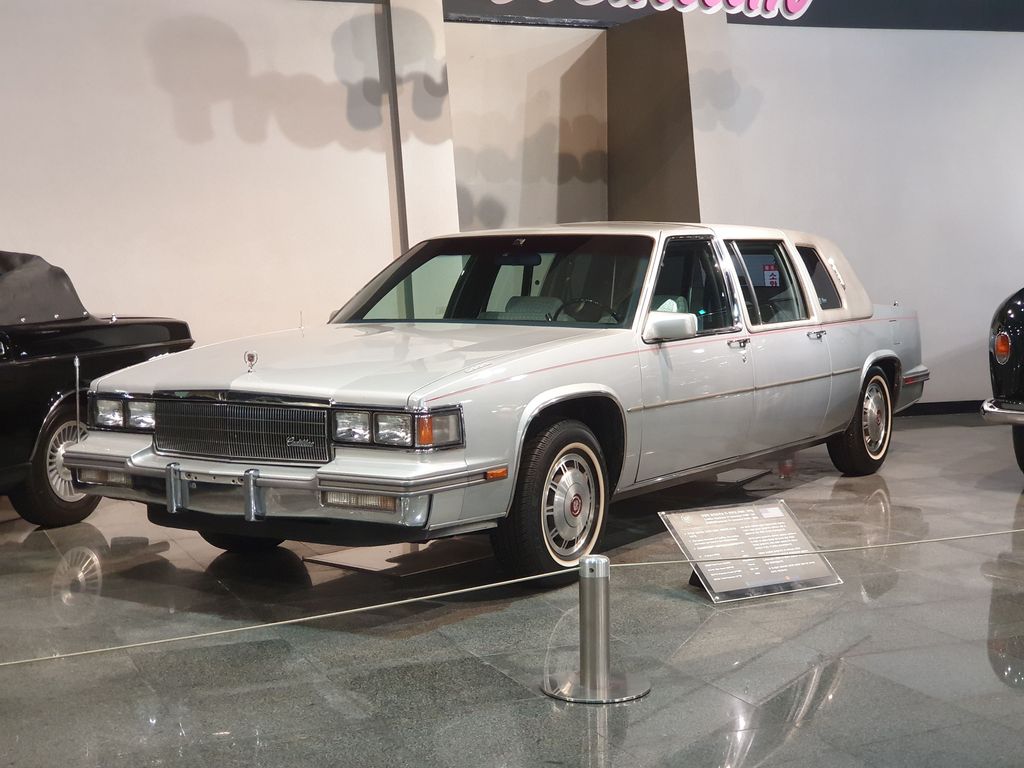
14. **The Cadillac with a Love Story: The 1986 Cadillac Fleetwood from *Love & Mercy***Perhaps the most heartwarming and uniquely storied car associated with Brian Wilson is not one he initially sought for his collection, but one that played a pivotal role in his personal life and was immortalized on screen. The “special Cadillac with a story” is none other than the 1986 Cadillac Fleetwood used in the film *Love & Mercy*, a vehicle that literally became the backdrop for his first encounter with his second wife, Melinda Ledbetter. The movie depicts Brian walking into a Los Angeles Cadillac dealer in 1986, and it was there, amidst the gleaming chrome and plush interiors of a Cadillac showroom, that he met Melinda, an actual Cadillac saleswoman at the time.
Although the script initially called for a Brougham—the model Brian actually bought—Wilson himself “personally hand-picked” the 1986 Fleetwood, changing the script to accommodate it because it “best suited his memory of that actual day.” This poignant detail reveals his deep, almost visceral connection to moments and the vehicles that framed them. The scene, perfectly acted by John Cusack as Wilson and Elizabeth Banks as Melinda, left Brian so “captivated with the car and his memory of his first meeting with his wife” that, after shooting, he asked the car’s current owner if he could buy it as a gift for Melinda.
Despite Melinda understandably not being “excited about having a 1986 Cadillac in 2015,” the story behind this particular Fleetwood, now meticulously preserved, resonates with profound emotional weight. The vehicle, which boasts “only 72,000 original miles with original Paint Original Vynil Top, Original Chrome and original leather interior and carpeting,” was a 2013 AACA National First Prize winner. It remains a cherished piece of cinematic and personal history, with its owner even noting that “The car still smells like the perfume Elizabeth Banks was wearing that day,” a testament to the powerful, enduring memories forged within its very cabin. It is truly a Cadillac unlike any other.
Car Model Information: 1996 Cadillac Fleetwood Base 4dr Sedan
Name: Cadillac Fleetwood
Caption: 1994 Cadillac Fleetwood
Manufacturer: General Motors
Production: 1976–1996
ModelYears: 1977–1996
Class: Full-size,luxury car
Layout: Front-engine, front-wheel-drive layout
Successor: Cadillac CT6
Categories: 1940s cars, 1950s cars, 1960s cars, 1970s cars, 1980s cars
Summary: The Cadillac Fleetwood is a full-size luxury sedan that was marketed by Cadillac from the 1977 through 1996 model years. Taking its nameplate from a coachbuilder historically associated with the General Motors division, the Cadillac Fleetwood became a stand-alone model line in 1985.
The first-generation Cadillac Fleetwood was introduced for 1985 as the division downsized its full-size C-body platform sedans to a front-wheel-drive layout. Slotted between the Sedan deVille and the Sixty Special, the Fleetwood also bridged the gap between the deVille and the D-body Fleetwood Brougham (Cadillac Brougham for 1987–1992). The second generation was introduced for 1993, replacing the Brougham as the D-body Cadillac sedan (the Fleetwood Brougham name became a trim option).
After the 1996 model year, Cadillac discontinued the Fleetwood line as GM ended production of full-size sedan lines in North America. General Motors consolidated Cadillac’s large sedan lines into the deVille series and later as the Cadillac DTS. Since 1996, the only longer-wheelbase sedans produced by the division have been the Cadillac CT6 and Cadillac Celestiq.
Get more information about: Cadillac Fleetwood
Buying a high-performing used car >>>
Brand: Cadillac Model: Fleetwood
Price: $30,900 Mileage: 25,902 mi.
Brian Wilson’s legacy, as we’ve seen, isn’t just etched in the harmonies of his timeless songs, but also in the gleaming chrome and roaring engines of the cars he loved. From the fictionalized drag races of his youth to the very real machines that filled his garage, automobiles were more than just a recurring motif; they were the very pulse of his creative spirit and a profound source of personal joy and solace. His passion, whether for a ’32 Ford or a modern McLaren, created a vibrant tapestry where music and horsepower merged, leaving an indelible mark on American culture. As car lovers cruise the winding Pacific Coast Highway today, they’re not just driving, they’re following routes mapped in song and memory—highways Brian Wilson helped chart, echoing with good vibrations, forever.

